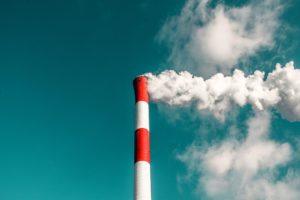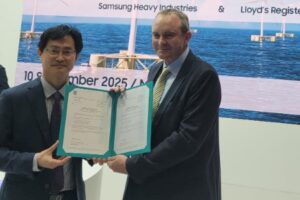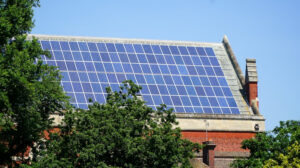DOE commits $6B to decarbonize U.S. industry


The U.S. Department of Energy (DOE) announced up to $6 billion for 33 projects across more than 20 states to decarbonize energy-intensive industries, reduce industrial greenhouse gas emissions, and strengthen manufacturing.
Funded by the Bipartisan Infrastructure Law and Inflation Reduction Act, the projects will focus on the highest emitting industries where decarbonization technologies will have the greatest impact, including aluminum and other metals, cement and concrete, chemicals and refining, iron and steel, and more. The DOE says the projects are expected to reduce the equivalent of more than 14 million metric tons of carbon dioxide (CO2) emissions each year
Here are some highlights from the announcement relevant to the renewables industry:
Cement and concrete
- The Lebec Net Zero Cement Plant Project in California, led by the National Cement Company of California, plans to produce carbon-neutral cement at the Lebec, California cement plant. Instead of using fossil fuels, the project would use locally sourced biomass from agricultural byproducts such as pistachio shells, replace clinker with a less carbon-intensive alternative (calcined clay) to produce limestone calcined clay cement (LC3), and capture and sequester the plant’s remaining approximately 950,000 metric tons of carbon dioxide each year.
Food and beverage
- The Delicious Decarbonization Through Integrated Electrification and Energy Storage project, led by Kraft Heinz, plans to upgrade, electrify, and decarbonize its process heat at 10 facilities by applying a range of technologies including heat pumps, electric heaters, and electric boilers in combination with biogas boilers, solar thermal, solar photovoltaic, and thermal energy storage. The tailored application of these technologies at each facility is expected to reduce annual emissions by more than 300,000 metric tons of carbon dioxide per year, translating to a 99% reduction from 2022 levels.
- In the Heat Batteries for Deep Decarbonization of the Beverage Industry project, Diageo Americas Supply plans to partner with Rondo Energy and the National Renewable Energy Laboratory to replace natural gas-fired heat with Rondo Heat Batteries powered by onsite renewable energy and electric boilers at facilities in Shelbyville, Kentucky and Plainfield, Illinois. These upgrades would reduce carbon emissions by nearly 17,000 metric tons per year to decarbonize the production facilities for spirits, ready-to-drink cocktails, and Bulleit whiskey.
“Rondo is excited to be working with Diageo to power their production operations and cut their costs,” said Rondo CEO John O’Donnell. “Diageo has been a pioneer in deploying technologies for efficiency, cost reduction, and decarbonization. The Rondo Heat Battery opens new opportunities for simpler cost reductions and deeper integration with renewable energy sources, and we’re honored Diageo has chosen us to help them achieve their 100% renewable energy goal.”
“Through our partnership with Rondo Energy we’ll build a model that can be replicated across our supply operations in the U.S.,” added Marsha McIntosh-Hamilton, president of North America supply at Diageo North America.
Process heat
- The Steam-Generating Heat Pumps for Cross-Sector Deep Decarbonization project, led by Skyven Technologies, plans to pioneer a process heat as a service model, electrifying steam production to replace natural gas boilers across an array of energy-intensive industrial customers that currently rely on fossil-fired heat.
- The Vikrell Electric Boiler & Microgrid System project, led by Kohler, plans to upgrade its new Vikrell bath and shower fixture manufacturing facility in Casa Grande, Arizona. The project plans to install electric boilers and a microgrid consisting of a 21 MW solar array and a 20.5 MW battery energy storage system. The project expects to reduce carbon dioxide emissions by an estimated 7,865 metric tons per year
A full list of projects is available here.




